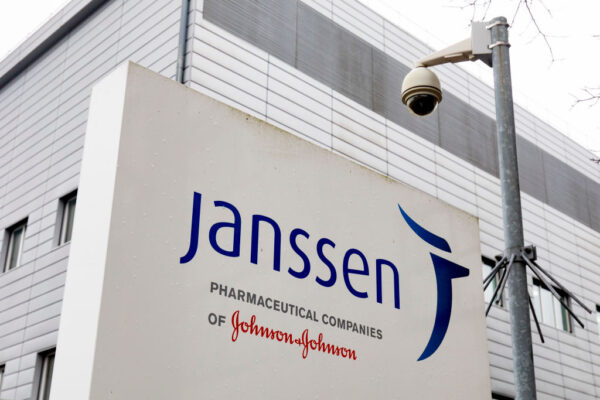
Multiple myeloma can be treated by several drugs but relapse in this type of blood cancer is common and when that happens, patients need other treatment options. Johnson & Johnson is looking to fill that need with a drug that addresses a novel target. The pharmaceutical company is seeking regulatory approval for this molecule and the most up to date clinical data supporting the application were presented during the annual meeting of the American Society of Hematology (ASH).
Patients in the Phase 1/2 clinical trial had some of the toughest cases that progressed after treatment with at least three different therapies, according to Ajai Chari, director of clinical research in the multiple myeloma program at Mount Sinai and an investigator in the study. Despite that, treatment with the J&J drug, talquetamab, led to response rates of up to 74%.
“To put this into context, historically for novel agents to get approved in myeloma by accelerated approval, we needed a response rate of 20 to 30,” Chari said, speaking during a briefing with journalists on Saturday. “Well now, we’re saying 70 is the new 20 to 30.”
Talquetamab is a type of drug called a bispecific T cell-engager. Such drugs bind to two targets, one on a T cell and the other on a cancer cell. Hitting both targets directs the T cell to the cancer cells so that the immune cells can carry out their tumor-killing work. The T cell target of talquetamab is CD3, the same protein target of other bispecific antibody drugs. What makes talquetamab stand apart is its target on cancerous cells: GPRC5D.
J&J’s Janssen Pharmaceutical Companies division currently sells four multiple myeloma drugs. The newest of the lot, Tecvayli, is a bispecific antibody that won its FDA approval in October. But Tecvayli’s cancer target, BCMA, is already addressed by several multiple myeloma drugs, including the J&J and Legend Biotech CAR T-therapy Carvykti. To date, there are no FDA-approved drugs that go after GPRC5D. Talquetamab could become the first.
“It’s important to pick the right target for these [bispecific antibody drugs], and GPRC5D is a good candidate for that because it’s highly expressed on myeloma cells but spares normal tissues, in particular, the hematopoietic stem cells,” Chari said.

A Deep-dive Into Specialty Pharma
A specialty drug is a class of prescription medications used to treat complex, chronic or rare medical conditions. Although this classification was originally intended to define the treatment of rare, also termed “orphan” diseases, affecting fewer than 200,000 people in the US, more recently, specialty drugs have emerged as the cornerstone of treatment for chronic and complex diseases such as cancer, autoimmune conditions, diabetes, hepatitis C, and HIV/AIDS.
The Phase 1 results for the talquetamab clinical trial were published Saturday in the New England Journal of Medicine. This part of the clinical trial enrolled patients whose disease progressed on all available therapies as well as those who could not tolerate those therapies. The Phase 2 portion of the study enrolled patients whose cancer did not respond to three or more earlier lines of treatment. Two doses of the subcutaneously injected drug were tested, a low dose given once a week and a higher dose given every two weeks.
Data from the Phase 2 portion of the study were presented for the first time during the ASH conference. For the analysis, the Phase 1 and 2 portions of the study were combined to provide a larger, more robust sample size, Chari said. The main goal of the Phase 2 portion was to measure the overall response rate to the treatment.
As of the May 16 cutoff date, 288 patients in the study who had not previously received a T-cell redirecting therapy had received the J&J drug at the recommended Phase 2 dose in either Phase 1 or Phase 2. In 143 patients who received the low dose, the overall response rate was 74.1%. Results showed that 23.8% of those responders achieving a stringent complete response, which is a deeper response than a complete response. In the 145 patients who received the high dose, the overall response rate was 73.1%; 20% of responders achieved a stringent complete response. In a separate cohort of 51 patients who had previously received a T cell-redirection therapy, the overall response rate was 63%. The median duration of survival was nine months or greater in all groups; longer durations of response were observed in those who showed a complete response to the therapy.
Serious adverse effects, classified as Grade 3 or 4, were uncommon. Low blood counts were reported, but were not unexpected with a bone marrow-based cancer, Chari said. Those problems occurred in less than one-third of patients. Chari said that is notable because when thinking about combining talquetamab with other treatments, the lack of low blood counts will be important. Cytokine release syndrome, a common side effect of bispecific drugs, was frequent but classified as low grade. Other side effects reported included problems in the skin, nails, and the loss of taste.
The Phase 3 confirmatory study already underway is comparing talquetamab to other approved therapies, while additional Phase 1 testing is evaluating the J&J drug in combination with them.
J&J said on Friday that it had submitted to the FDA a biologics license application for talquetamab. While the regulatory filing puts the antibody drug in line to become the first one addressing GPRC5D, it is not the only one in development for that target. Bristol Myers Squibb presented data during the ASH conference for its contender, BMS-986393, a CAR T-therapy currently in Phase 1 testing.
According to data presented during the ASH conference, 17 patients had received the experimental BMS treatment as of May 24. In this early stage of the Phase 1 study, some antitumor responses were observed, including some complete responses. Cytokine release syndrome and neurotoxicity were low grade; the neurotoxicity was characterized as infrequent and short-lived. Dose escalation in the trial is ongoing.
Photo: Niels Wenstedt/BSR Agency, Getty Images)












